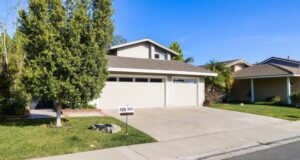With a population of around 25 million, there are many different housing options in Ghana to suit different requirements. Whether you are thinking about moving, or are just interested in more information, here are just a few facts about homes in Ghana.
Variations
There are several different housing types and styles that you may see in Ghana. If you are considering moving, head to property websites such as Ghana Property Centre to see a whole host of available properties. Filter down your options to display properties available to buy, rent, or are short let, with extra details, such as price and number of bedrooms. A property website will then pull up all the available housing options that multiple estate agents have going at the moment, and it means you can find your ideal home based on your requirements, such as location, budget, and size, quickly and easily. Here are just a couple of accommodation options to start you off.
Single Room
These consist of single rooms in compound buildings, and the bathroom and toilet facilities are shared; they are very cost-effective and compact.
Single Room Self Contained
This is the same as a single room, but the bathroom and toilet facilities are private.
Chamber and Hall
This option consists of two rooms, typically one used for sleeping and one for living. As with the two single-room options, there is the choice to share facilities or have private ones. Chamber and halls are also found in the same compound houses as single rooms.
Apartments
Flats and maisonettes are popular options, as they can be smaller than a house and therefore more manageable. In a condominium, the units are sold individually, whereas apartment units are usually rented. There is again another difference between condos and apartments and maisonettes. A maisonette is at its most basic, a flat that has two floors, which gives more room and privacy, and they often have their own separate entrances.
Houses
Houses offer a large amount of room and privacy, as well as usually having outdoor space. They are very common with families, as they provide room to grow and develop. When you own a house, you also tend to have more control over any decoration and alterations you want to perform, which means you can make the house your own.
History
Traditional Ghanaian homes were made from raw, natural materials that were available in the immediate location. This includes stone, mud, clay, and wood. Stone is particularly good at temperature control, as it can help keep the inside cool or warm. It is very dense, so heat from sunlight takes a long time to penetrate the walls. Similarly, to keep warm inside, the stone is a good insulator and can keep heat inside for longer. They were also often made in a circular shape, which is continued in modern architecture worldwide.
Circular structures tend to use less building material, regulate temperature better, and block out sound from outside sources. The circular shape can be seen around us in nature, and therefore it is only natural that this would be a traditional shape for a home. You might also see many homes and apartments painted white, as this colour helps to reflect sunlight and keep the interior cool. Many countries with warmer climates tend to whitewash their buildings, as the roof and exterior walls come into contact with the most sunlight.














